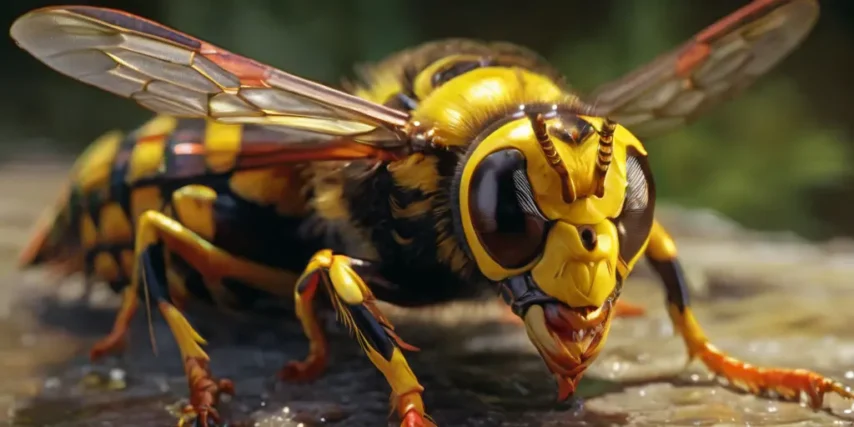The Intricate Science Behind Wasp Stings: Nature’s Tiny But Potent Weapon
Introduction:
In the realm of insects, the wasp stands out as both a marvel of nature and a potential menace. Despite their small size, wasps possess a potent defense mechanism: their sting. This article delves deep into the intricate science behind wasp stings, exploring the anatomy of the sting, the physiological effects on both the victim and the wasp, as well as the evolutionary significance of this remarkable adaptation.
Anatomy of a Wasp Sting:
To understand the mechanics of a wasp sting, one must first examine the anatomy of these tiny aggressors. Wasps, like their fellow hymenopteran relatives, possess a specialized structure called the ovipositor, which has been modified over millions of years of evolution to serve a dual purpose: egg-laying and defense.
The ovipositor consists of three main components: the lancets, stylets, and venom sac. When a wasp perceives a threat or is provoked, it uses its muscular abdomen to forcefully drive the ovipositor into the target, injecting venom through the hollow stylets. The venom sac, located at the base of the ovipositor, serves as a reservoir for the potent cocktail of toxins that elicit the painful response associated with a wasp sting.

The Chemical Arsenal:
At the heart of a wasp’s sting lies its venom, a complex mixture of proteins, peptides, and other bioactive molecules designed to incapacitate or deter potential threats. One of the key components of wasp venom is histamine, a compound responsible for triggering an inflammatory response in the victim. This reaction results in localized swelling, redness, and pain at the site of the sting.
Additionally, wasp venom contains a variety of enzymes and peptides that target specific physiological pathways in the victim’s body. For example, phospholipase enzymes disrupt cell membranes, leading to tissue damage and necrosis, while hyaluronidase enzymes promote the spread of venom through the victim’s tissues, exacerbating the inflammatory response.
The Physiological Response:
Upon being stung by a wasp, the victim typically experiences a rapid onset of pain and discomfort, followed by localized swelling and redness. This immediate reaction is the result of histamine release and the activation of inflammatory pathways in the body. In severe cases or in individuals with allergies to wasp venom, the physiological response can be much more pronounced, leading to systemic symptoms such as difficulty breathing, dizziness, and even anaphylaxis.
In addition to its immediate effects, a wasp sting can also have long-term consequences for the victim’s health. For example, repeated exposure to wasp venom may sensitize the immune system, leading to increased severity of allergic reactions upon subsequent stings. Furthermore, the tissue damage caused by the venom can result in scarring or other complications, particularly if the sting occurs in a sensitive area such as the face or throat.

Evolutionary Significance:
From an evolutionary perspective, the ability to deliver a painful sting has provided wasps with a significant advantage in the struggle for survival. By deterring potential predators and competitors, wasps are better able to protect themselves, their nests, and their offspring from harm. Additionally, the pain and discomfort associated with a wasp sting serve as a powerful deterrent, helping to ensure that potential threats think twice before crossing paths with these formidable insects.
Furthermore, the diverse array of bioactive molecules found in wasp venom underscores the remarkable adaptability of these insects. Over millions of years of evolution, wasps have fine-tuned their venom to target specific physiological pathways in their victims, maximizing the effectiveness of their defensive strategy.

Conclusion:
In conclusion, the wasp sting represents a fascinating example of nature’s ingenuity, combining intricate anatomy, potent biochemistry, and profound evolutionary significance. By understanding the science behind wasp stings, we gain insight into the complex interplay between predators and prey in the natural world. While the pain and discomfort associated with a wasp sting may be unpleasant, it serves as a poignant reminder of the remarkable adaptations that have allowed these insects to thrive in diverse ecosystems around the world.







